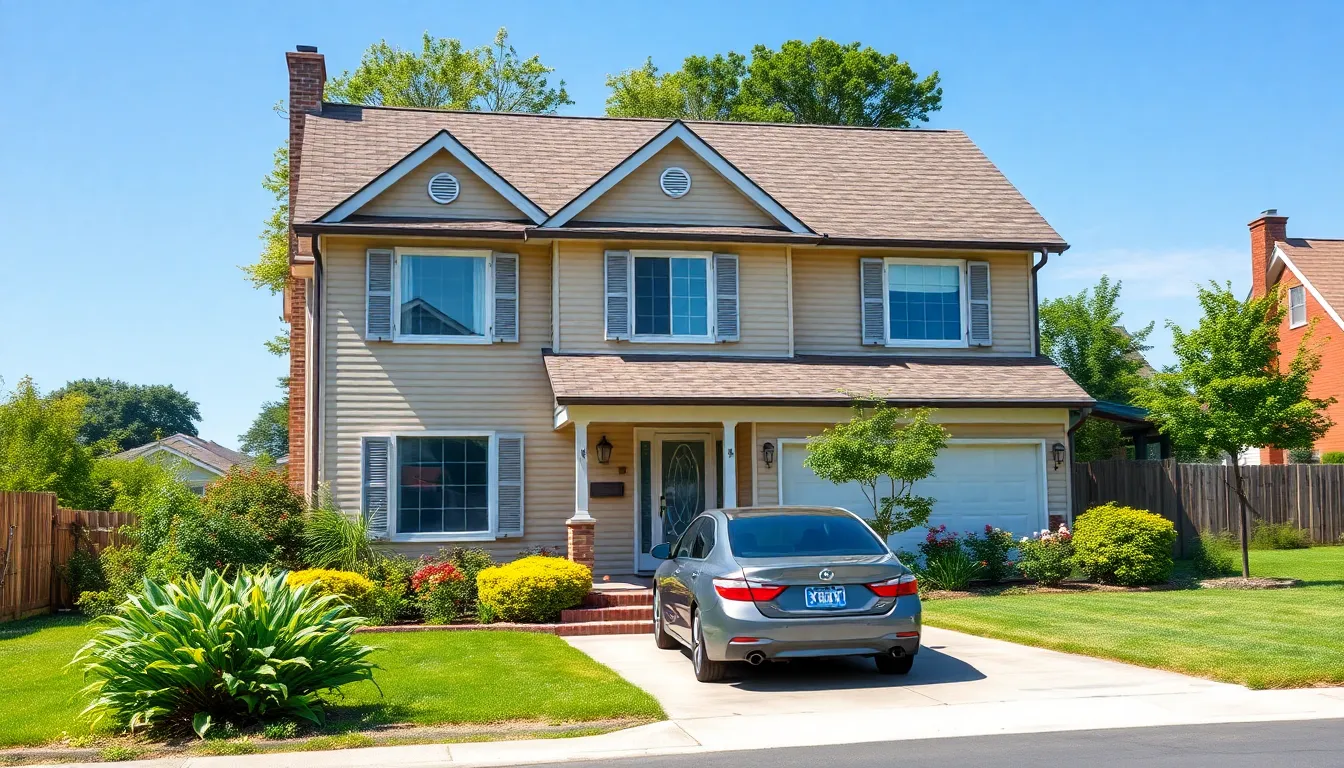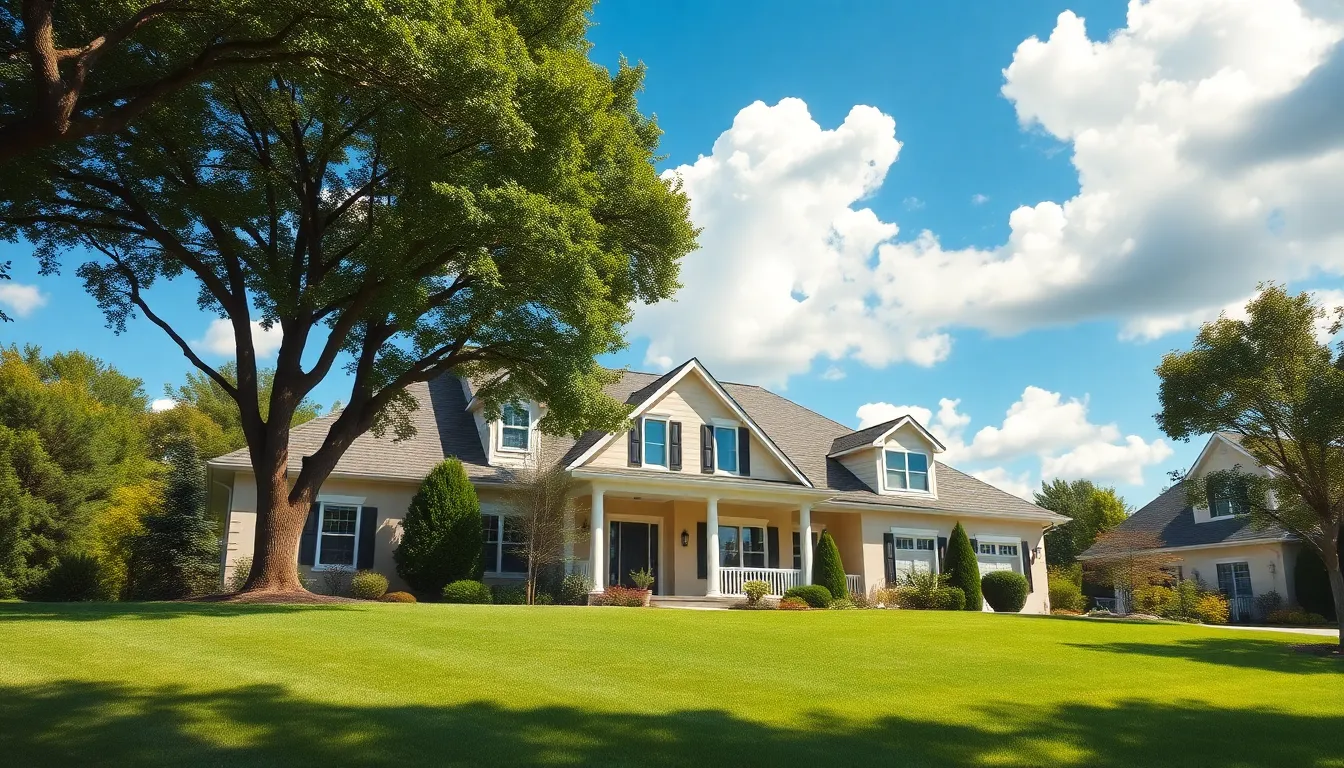Home is where the heart is, but it can also be a significant financial investment. Comprehensive home insurance offers peace of mind by protecting that investment against unexpected events. Whether it’s natural disasters, theft, or liability claims, having the right coverage can safeguard both property and personal belongings.
Navigating the world of home insurance can feel overwhelming. With various policies and options available, understanding what comprehensive home insurance entails is crucial for homeowners. This guide will break down the essentials, helping readers make informed decisions about their coverage needs. By grasping the nuances of comprehensive home insurance, they can ensure their homes remain safe havens.
Table of Contents
ToggleWhat Is Comprehensive Home Insurance?
Comprehensive home insurance offers protection for a homeowner’s residence and its contents against a variety of risks. This policy includes coverage for natural disasters, theft, vandalism, and liability claims. Homeowners can safeguard their financial investment and ensure stability in unforeseen circumstances.
Comprehensive home insurance typically encompasses the following coverage types:
- Dwelling Protection: Covers damages to the physical structure of the home, including walls, roof, and built-in appliances.
- Personal Property Coverage: Protects personal belongings, such as furniture, electronics, and clothing, from covered perils.
- Liability Coverage: Offers protection against legal responsibility for injuries or damages caused to others on the property.
- Additional Living Expenses: Provides financial support for temporary housing and living costs if the home becomes uninhabitable due to a covered loss.
Selecting a comprehensive home insurance policy involves evaluating various options based on individual needs. Homeowners should assess coverage limits, deductibles, and specific inclusions or exclusions present in policies. Understanding these components facilitates informed decision-making regarding insurance needs and priorities.
Benefits of Comprehensive Home Insurance


Comprehensive home insurance offers various advantages, ensuring homeowners feel secure in their investment. These benefits encompass protection against natural disasters, coverage for personal property, and much more.
Protection Against Natural Disasters
Protection against natural disasters constitutes a primary benefit. Comprehensive home insurance covers damages caused by events like hurricanes, floods, earthquakes, and wildfires. This coverage mitigates financial loss, providing funds for repairs and replacements. For example, policies may cover the full cost of rebuilding homes destroyed by severe weather events, safeguarding homeowners from overwhelming expenses. Knowing one’s home has adequate protection against these unpredictable occurrences reinforces peace of mind.
Coverage for Personal Property
Coverage for personal property significantly enhances comprehensive home insurance. This benefit encompasses personal belongings, including furniture, electronics, clothing, and other valuable items. If personal property suffers damage or theft, such policies provide reimbursement based on assessed values or replacement costs. Policies typically cover loss or damage occurring both inside and outside the home, ensuring thorough protection. This thorough coverage ensures homeowners recover quickly from unexpected events, reducing the stress associated with loss or theft.
Key Features of Comprehensive Home Insurance
Comprehensive home insurance includes several vital features that protect homeowners from various risks associated with property ownership. Understanding these key elements helps ensure adequate coverage.
Liability Coverage
Liability coverage protects homeowners against legal claims and financial losses resulting from injuries or damages that occur on their property. This coverage typically includes payments for medical expenses, legal fees, and damages awarded in lawsuits. Most policies offer coverage limits that vary, often ranging from $100,000 to $500,000, depending on the homeowner’s needs and potential risks. Homeowners should assess their exposure to identify appropriate liability amounts, especially if they frequently host visitors or own pets.
Additional Living Expenses
Additional living expenses (ALE) coverage offers financial support for homeowners if their property becomes uninhabitable due to covered perils like fire or severe storm damage. This feature helps cover costs associated with temporary housing, meals, and other living expenses while repairs are underway. ALE coverage typically applies for a specific period, often ranging from 12 to 24 months, with limits that vary by policy. Homeowners should review these limits to ensure sufficient support during unexpected disruptions, allowing them to maintain their quality of life despite property damage.
How to Choose the Right Policy
Choosing the right comprehensive home insurance policy involves careful consideration of various factors specific to each homeowner’s situation. Understanding coverage needs and comparing different providers plays a crucial role in securing the right policy.
Assessing Your Coverage Needs
Assessing coverage needs ensures adequate protection tailored to individual circumstances. Identify the value of the home and its contents to determine necessary coverage limits. Calculate the cost of rebuilding the home and factor in additional living expenses (ALE) for temporary housing. Analyze personal assets and prioritize the value of valuable items like jewelry or collectibles. Evaluate exposure to natural disasters, considering local risks such as floods or earthquakes, which may require additional endorsements or specialized policies. Address any specific requirements unique to personal situations, ensuring comprehensive protection meets distinct needs.
Comparing Different Providers
Comparing different providers involves evaluating policies based on coverage options, customer service, and financial stability. Review multiple insurance carriers, gathering quotes for similar coverage levels and deductibles to make informed decisions. Assess customer reviews and ratings from reliable sources to gauge satisfaction levels and responsiveness in claim scenarios. Verify financial ratings from reputable agencies, which reflect the insurer’s ability to handle claims efficiently. Investigate discounts offered for bundling policies or implementing home security features, as these factors can significantly reduce premiums. Prioritize providers that exhibit transparency in terms of policy terms and potential exclusions, ensuring clarity in understanding coverage limits.
Common Exclusions in Comprehensive Home Insurance
Comprehensive home insurance offers extensive coverage but typically includes several common exclusions. Homeowners should understand these exclusions to avoid surprises during a claim.
- Negligence-related damages
Negligent behavior, such as failing to maintain the property or ignoring repair needs, often leads to denial of claims. Homeowners should regularly inspect and maintain their homes to mitigate risks.
- Flood and earthquake damage
Standard comprehensive home insurance policies usually exclude coverage for flood and earthquake-related damage. Homeowners in high-risk areas should consider separate flood or earthquake insurance to ensure full protection.
- Wear and tear
General wear and tear from aging or regular use isn’t covered by comprehensive home insurance. Homeowners must budget for ongoing maintenance and repairs to address these issues.
- Intentional damage
Any intentional damage caused by homeowners or their guests isn’t covered. Understanding this exclusion emphasizes responsible behavior in homeownership.
- Business activities
Damage related to business operations conducted from the home typically isn’t included in comprehensive coverage. Homeowners running businesses from their residences may need a separate policy for business property and liability.
- High-value items
High-value items, such as jewelry, artwork, and collectibles, often exceed standard policy limits. Homeowners should schedule these items to receive adequate coverage, ensuring their value is protected.
- Government action
Losses due to government action or regulation, such as demolition or seizure, aren’t typically covered. Homeowners need to understand risks associated with local development and zoning changes.
By recognizing these common exclusions, homeowners can make informed decisions about additional coverage needed to protect their assets. Understanding these aspects enhances the relevance and adequacy of comprehending comprehensive home insurance.
Comprehensive home insurance is essential for safeguarding one’s investment and ensuring peace of mind. By understanding the intricacies of different policies and coverage options, homeowners can tailor their insurance to fit their unique needs. This proactive approach not only protects against unexpected events but also empowers individuals to navigate potential risks confidently.
With the right comprehensive policy in place, homeowners can face challenges like natural disasters or theft with assurance. They can focus on rebuilding and recovery rather than financial strain. Ultimately, investing time in selecting the appropriate coverage is a crucial step toward maintaining a secure and resilient home.







